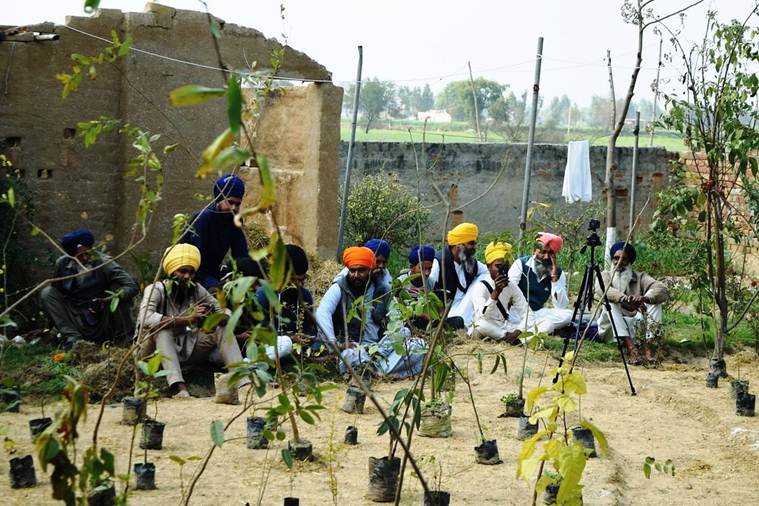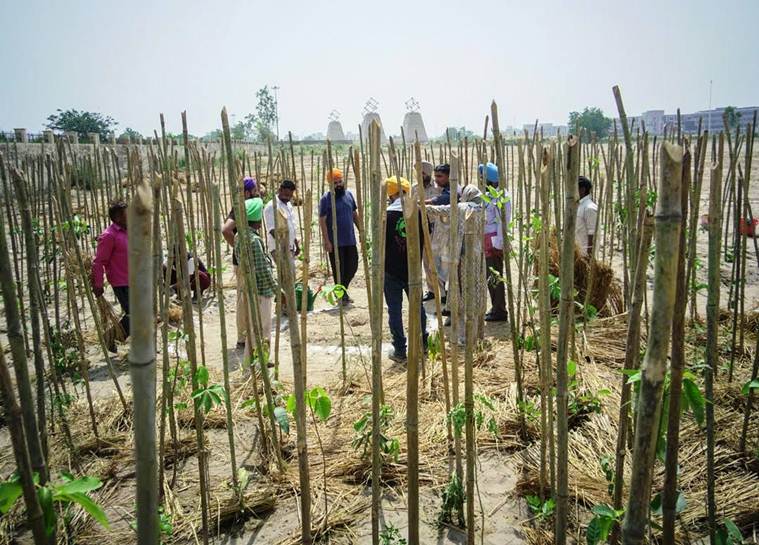
“Pavan Guru Pani Pita, Mata Dharat Mahat (air is the Guru, water the father and the earth is our great mother),” wrote Guru Nanak Dev in Japji prayer of Sri Guru Granth Sahib, laying his vision of a world where humans should share a sensitive and inseparable bond with the nature and environment.
So close was the first Sikh master to the nature and greens that several plant species find extensive mention in Sri Guru Granth Sahib.
In a tribute to the Guru ahead of his 550th birth anniversary, a unique project — Guru Nanak Sacred Forests (Guru Nanak Bagichi) — has been set rolling in India (mainly Punjab) and Pakistan, where volunteers are converting empty patches of land into forests, planting only native plant species, including those mentioned in Guru Granth Sahib, and using Japanese method ‘Miyawaki’ to ensure a dense growth of greenery. Each site is being planted with at least 550 saplings or more as a tribute to Guru Nanak.

The project is being implemented by the US-based organization working on environment conservation EcoSikh along with forest department of government of Punjab, which is providing saplings for the cause.
Since the inception of the project in March this year, 11 patches of land in India and one in Pakistan have been converted into Sacred forests, where saplings have been planted after tying up with educational institutions, village panchayats or government offices.
Speaking to The Indian Express, Ravneet Singh, South-Asia project manager, EcoSikh, said that Miyawaki is a Japanese technique of layered plantation, which ensures 30 times denser growth of plants and hence better carbon-dioxide absorption. “Guru Nanak was very close to nature. He laid the foundation of protecting air, water, biodiversity and forests through his teachings. Also, the forest cover in Punjab is shrinking. To pay him a real tribute, the Guru Nanak Sacred Forests are being planted by our teams after tying up with the people who are providing us land for the same,” he said.
Why this drive makes more sense
Punjab’s forest cover is among the lowest in the country. According to the Forest Survey of India (FSI) report of 2017, ‘the recorded forest area in Punjab is 3,084 sqkm, which is 6.12 per cent of its geographical area. However, the total forest and tree cover is 3,459 sqkm, or 6.87 per cent of state’s total geographical area and just 0.43 per cent of India’s forest & tree cover.’ The report also says that ‘based on interpretation of satellite data pertaining to October-December 2015, the forest cover in state is 1,837 sq km or 3.65 per cent of state’s geographical area.’
Each site, at least 160-180 square meters in size, is being planted with shrubs, sub-trees, trees and canopy trees in a layered manner. “We are using water retention material (toorhi), perforation material (rice husk), paddy stubble, cow dung manure, bamboo sticks and other natural materials to increase soil fertility. The idea is to create dense forests, not landscaped gardens,” he said.
The species being planted are also only native ones like peepal, sheesham, mango, jamun, kikar, ashwagandha, mahua, harshingaar, bargad, falsa, arjun, bel patra, amaltas, guggal among others.
“Most of the saplings are being provided by Punjab forest department. Usually the cost to convert a patch of 160 sqm land to Sacred Forest is around Rs 90,000. People can arrange the material on their own and our volunteers will assist in planting,” he added.

Till now, nine such forests have been planted in Punjab at Gilli Patti in Bathinda, Burnala in Gurdaspur, village Talwandi Malik at Samana in Patiala, Tajpur Bet in Ludhiana, Meemsa in Sangrur, Indian Institute of Technology (IIT) Ropar, DC complex and agriculture department office at Mohali and Nanaksar in Ludhiana (where work is ongoing). Another one has been planted at Maruvan in Jodhpur of Rajasthan and one at Guru Gobind Singh College sector-26 at UT Chandigarh.
Another one has been planted at Maruvan in Jodhpur of Rajasthan.
The first such forest has also been planted at a site in Kasur of Pakistan. “We have tied up with an organization, Restore.Green, which has created the forest in Kasur,” said Singh. “Another site is coming up at Khadoor Sahib in Punjab. At each site, 28-38 native species are being planted,” he added.
Singh added that a site is converted into forest plantation only after land owners assure proper care afterwards and also have dedicated caretakers for at least next 30 months. “They have to send us the videos of how seedlings are being watered and being taken care of properly, otherwise it defeats the whole purpose,” he adds.